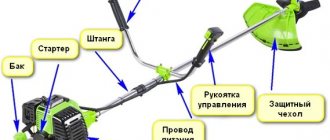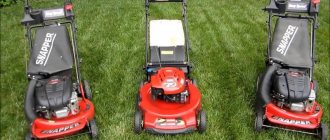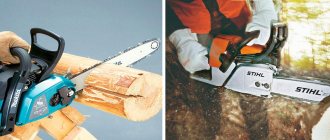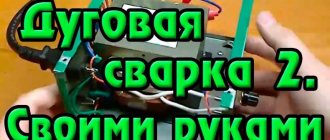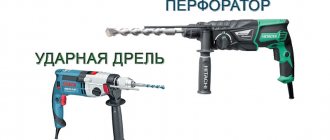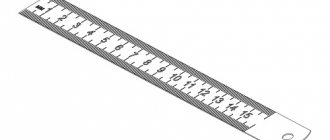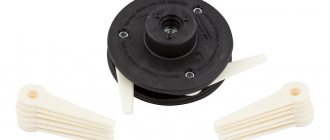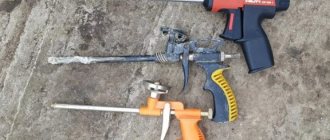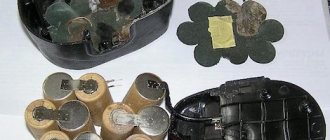How to properly mow grass with a scythe?
Braid - what and how to do with it. There is a lot of grass on the estate. But in my entire adult life I have never learned to mow. I had to master this business. The question immediately arises, which braid to buy?
I heard a lot in conversations that it is very difficult to cut off a scythe well. And many said that there are problems with the cornfields. My question was resolved simply or not easily. More precisely, I just decided.
I bought an already industrially cut scythe for 250 rubles (the cheapest), and to go with it I bought a scythe (a stick with a lock for the scythe and a handle) for 125 rubles. At home I sharpened my scythe, attached it to my scythe and happily went to mow. The scythe was enough for 2 days.
Having no experience, I constantly touched all sorts of bumps, and the scythe went into the ground in a big way. The lock did not hold the scythe and as a result, the stick broke. The handle also broke. The eternal question arose: “What to do?” Should I buy a new braid or make it myself?
I thought about it and went to cut down a young alder tree. They just grow thickly and stretch out strongly, which is why they are quite even. The thickness of the trunk at the bottom is 6-8 centimeters.
I removed the bark from it; it comes off easily when wet. I made an oblique cut under the braid. On the braid itself there is a protrusion and a 10 mm hole. I made a hole for the protrusion and drilled a hole in the brace for a 10 mm bolt. I installed the braid and secured it with a bolt. To prevent the wood from splitting from effort, I placed two clamps in the place where the braid connects to the braid, near the bolt. Good quality clamps for 15 rubles. Before tightening the clamps, you need to lubricate them with some kind of oil or lithol, then the clamps attract the braid to the braid very well.
Now I mow and am happy. The braid is thicker and more comfortable to hold. The braid is held tightly (not like with a lock). Now I'm thinking about what kind of handle to make.
And there is a lot of mowing on the estate; I don’t want to use a mower, they are too noisy. And so I got up at 5 o’clock and slowly mowed 2-3 acres.
How to properly mow grass with a scythe?
First of all, you need to choose your working tool and properly prepare it. Of course, a braid can also be bought at a hardware store, but now we want to tell you how to make it yourself. Pay special attention to the braid - it is best made from aspen, spruce, birch, maple, linden, but the handle is best made from willow or bird cherry.
The diameter of the handle blank should be approximately 3-3.5 cm, and the length - about 40 cm. In this case, the blank itself must be bent and tied with twine, having previously cut out a recess for the shaft. To make mowing with a scythe convenient, the handle must be positioned approximately at waist level—pay attention to this.
If the working tool is already ready, it’s time to go to the hayfield and work hard.
How to properly mow grass with a scythe: techniques for your convenience
Let's begin our preparation for easy and, most importantly, safe haymaking step by step: In the starting position, you need to place your feet so that the distance between your heels is 35-40 cm. Proper mowing with a hand scythe can only be done with error-free swings, performed in 2 steps. In the first case, the tool must be moved from left to right, in the second, when cutting grass, from right to left. And at both stages the scythe should be pressed close to the ground. Direct the scythe along the radius and try not to take up too much working space - no need to rush, 10-15 cm of grass is enough. After making 1-2 swings, move your right leg forward 15-20 cm, making a couple more swings with your left: as you can see, the pattern is quite simple.
To properly mow the grass with a scythe and not overwork, it is important to keep your body in the correct position: you need to keep your knees straight and your head not bent.
Well, now the most important thing. Remember, this work can be quite dangerous, so do not allow yourself to be distracted, especially if you are coming to haymaking for the first time.
How to work with a scythe
The effort used during work will be minimal if you ensure an even cut of the grass. Place the blade of the scythe on the ground and rest the shaft against your shoulder. Then mark a point on the braid that corresponds to your navel. The handle should be located in this place.
Adjust the direction of the handle so that it is convenient to hold the scythe in weight, and the knife is parallel to the ground.
That's basically it, let's start mowing:
- The stance should be level, knees slightly bent. The right foot is slightly forward for a small step.
- The scythe should be held so that the knife is parallel to the ground. We keep the distance to the ground minimal, with the butt almost touching the ground.
- You should not grab the maximum piece of grass. The braid should go without much effort. This will ensure an even cut, and the mower will get less tired.
- After each swing, we move our legs forward a distance equal to the cut. Watch your stance, don't tilt your head. When cutting, cut from the hip, not the hip.
- When retracting the scythe, you should not lift it. Returning to its original position is like dragging it along the ground. The cut begins along the direction of movement and ends perpendicular to it.
With the correct movements, with each swing a new cut of grass will fall to the ground. And the previous cut is collected into a windrow at the end of the cut. The grass is then dried and collected.
Mowers cut the grass correctly.
Why is it better to mow wet grass?
Mowing with a hand scythe is done early in the morning and the process continues until the dew disappears. This is explained by the fact that wet grass is heavier and provides greater resistance to the knife. Wet grass is easier to mow, while dry grass simply crumples without the necessary resistance.
Additional moisture cools the cutting edge of the tool, which has a beneficial effect on the durability of the cutting ability of the knife. In addition, moisture acts as a lubricant for the blade, thereby reducing friction. Which accordingly affects the effort expended.
How to properly mow grass with a hand scythe
There are several situations in which a scythe can be optimally useful in a dacha or suburban area:
- the rains passed and the grass began to grow greatly;
- there is too much grass for the trimmer, but there is no lawn mower;
- you need to mow the grass in a place that is inconvenient for a lawn mower (uneven soil, near bushes or trees).
If the grass is too tall - more than 15 cm, then the trimmer will scatter it in the form of small debris throughout the area. In order to remove mowed vegetation quickly and without unnecessary debris, it is advisable to use a hand scythe. How to use it will be discussed in this article.
Potential tools for manual labor
Some owners who are not afraid of hard work still use hand scythes. As a rule, the tool helps to get rid of grass that is intended for hay. Some owners level their lawns with it. There are several varieties of hand braids.
- Lithuanian. This is the most famous option with a straight and long handle and the same blade.
- Pink salmon. It has a curved handle that helps get rid of grass in hard-to-reach places and in areas with difficult terrain.
- Serpan - mini braid, serpan braid. This tool has a short blade and the same handle. It is designed to remove plants with hard stems and branches (clumps of grass, bushes, etc.).
It will be difficult for an untrained person to work even with a familiar tool. It takes time to get used to it. How do you mow the grass?
- With your left hand you take the scythe above the handle, with your right hand - by the handle.
- The right leg is placed forward for support, the left one is slightly back.
- Make circular swings, moving from right to left. They try to keep the handle on the belt line.
- The body is tilted and rotated slightly during operation. The blade's nose is raised off the ground to prevent it from touching the ground and to ensure an even cut of the grass.
When working with a hand scythe, it is very important to exercise maximum caution, because with a sharp tool it is easy to injure not only yourself, but also those around you.
Why do they mow the grass?
Weed grass has good adaptability to any growing conditions and grows everywhere. If weeds are not destroyed, then in a couple of years they will turn any area into a wild field.
Growing weeds quickly take over the usable area of the site and intensively use nutrients and moisture from the soil. It is impossible to destroy uninvited flora that grows next to useful plants using chemicals.
This will lead to the death of all vegetation. It is for these reasons that it is necessary to mow the grass. To use your time rationally, you need to choose the right mowing tool:
- you need to mow with a lawnmower on a flat, large area - a lawn or a recreation area;
- The trimmer is convenient to work in any area if the grass height is from 5 to 10 cm.
- A scythe is used to cut long grass or vegetation in an uneven area.
When choosing a tool, you must remember that the older the scythe, the better the metal used to make it.
Modern braids are significantly inferior in quality to Soviet ones. The size of the tool is indicated by a number from 3 to 9. The number determines the length of the blade: the higher the number, the longer the braid.
Mowing grass with a trimmer - price per hundred square meters, advantages
- Ensures fire safety of the territory. Dry grass growing in abundance on the site is excellent soil for the spread of fire.
- Protects the area from the spread of insects, including carriers of dangerous infections such as ticks. In addition to this measure of protection, it is recommended to additionally perform acaricidal (against ticks) treatment.
- Protects the area from hidden contamination with household waste.
- Creates an atmosphere of well-groomedness and comfort on the site.
- Promotes the growth and development of cultivated plants.
Flowers similar to daisies: name, description, photo, planting and care
Mowing grass with a trimmer, price depends on the following parameters:
- How complex is the landscape of the site;
- How littered is the area?
- How tall is the grass in the area?
- Is the grass required to be removed after mowing?
You can find out the average cost of grass mowing work by calling our managers; they will be happy to inform you and accept a request for a specialist to visit you.
Where and when do they cut the grass?
The grass must be mowed as it grows. Intensive growth of vegetation occurs in late April - May, especially intensifying after rains.
Mown grass must be immediately removed from the site, since unharvested parts of plants can grow on wet soil. Then you can mow once every 2-3 weeks, depending on the growth of vegetation.
If you do not start growth, you can mow down small shoots with a trimmer as they appear.
In hot weather, plant growth slows down and you need to mow less often. In hot weather, you should not mow the lawn too low - the grass will start to burn out.
The last mowing of lawns occurs in October.
Device and main components
A hand scythe consists of: a knife, a scythe, a handle, a wedge and a ring.
Did you know? The knife can make a sound reminiscent of a bell.
Canvas
The blade is a long blade curved towards the bottom. Made of tool steel (U8, U7). There is a classification depending on the length of the knife: 50 cm - 5, 60 cm - 6 cm and up to 9. The most common is No. 5. Consists of: blade, butt, tip, spout, heel and beard.
You can distinguish a high-quality blade from a scythe by the following characteristics:
- no damage or irregularities;
- equal blade thickness;
- deep sound upon impact;
- good elasticity.
Knives also have another name - Lithuanian or canvas.
Gardeners and gardeners often have to fight weeds. There are many devices for mechanical removal of enemies of cultivated plants. Among them is the Fokina flat cutter. A flat cutter can be used to cut and pull out weeds. Let us note that it is quite possible to make this manual cultivator yourself with your own hands.
Kosovishte
The braid, or scythe, handle, is the long wooden base of a hand-held scythe. Length - 1.7 or 2 m. Must be without damage, elastic, even. A good material is a spruce trunk at a height of 2 m. For production: remove unnecessary elements (knots, bark), give the desired shape, dry in a vertical position, sand, or soak in a wax solution.
To start making a hand-held grass scythe, you need to know how to fit the scythe onto the scythe: make an angled cut at the end and a small indentation for the tenon of the heel of the blade. For mowing on uneven terrain, the cut is 35 mm, on flat terrain – 10 mm.
Lever
For more convenient mowing, there is a handle or bow. For fastening: cut a square into the braid, hammer in the spike of the handle, wedge it, you can strengthen it with self-tapping screws or self-tapping screws.
There are
fixed and adjustable . The first ones are stable and reliable, the second ones are more convenient if used by many people.
How to mow grass correctly: technique
Good mowing is ensured by high-quality working tools and their preparation for work.
Instructions for preparing for mowing:
- The tool must be sharp and not become dull while you mow. Sharpen it on an abrasive wheel. The width of the circle is 1.5-2 cm; the blade is moistened during sharpening to keep it wet. The lower part is sharpened.
- Breaking is done using a special hammer. The purpose of beating is to prevent the blade from quickly dulling when mowing.
- Both planes of the braid are sharpened with a whetstone. If you do not have experience sharpening such a tool, then it is advisable to find a professional.
Mowing technique:
- starting position of the mower: take the tool; during work, the torso will bend slightly, following the movement of the hands; the supporting leg is slightly in front; the body is slightly turned to the left.
- the mower's swing will consist of two parts: first the tool goes in one direction, then in the other.
- the strokes are not wide; the hands move like pendulums - from right to left and then a second swing from right to left.
- the swings are smooth - there should be no tension in your hands, otherwise you will quickly get tired.
- To make mowing convenient, the handle should be located at waist level.
- When a mower mows, the heel of the scythe rakes up the mown plants and places them on the side of the mower. It turns out to be a grass swath.
The mow should be straight and its width should not change. Video: how to properly mow grass with a hand scythe
Main characteristics
The power indicator varies quite significantly in different models - from 250 to 3500 W. Before you buy a trimmer with the highest values, based on the opinion “the more powerful, the better,” think about whether you need it? For example, if the device is needed only for cutting grass in a flower bed, then high power is unnecessary. A trimmer up to 500 W can handle such a simple task. On the other hand, do not blame the manufacturer and seller if a low-power tool cannot cope with dense grass or overheats from prolonged use. Only a medium and high power model - from 500 to 1500 W - can cope with such tasks. Devices with the highest watts - from 1500 to 3500 - are useful for professional grass cutting, as well as for owners of large, varied areas where there is grass with thick stems, bushes, and small branches.
The engine location can be top or bottom. Everything is simple here.
The lower motor is located near the ground and often forms a single unit with the cutting head. This trimmer is easier to hold in your hands, it is lighter and is perfect for women and pensioners. It is believed that a device with a lower engine is more maneuverable, which means it will mow down unnecessary grass in the most difficult to reach places. But there are also disadvantages. They should not work after rain or morning dew.
A trimmer with a top-mounted engine is more productive and durable. They can work in any weather. Yes, this tool is not so comfortable, but if you get used to it, which is helped by various belts and handles, then mowing will become easier.
A shaft is installed inside the rod: a straight (rigid) shaft or a flexible shaft (cable). You can feel the difference between a flexible shaft and a steel shaft when you start cutting dense grass or bushes. In this case, the braking load on the gearbox increases, at which the cable collapses, and the rigid straight shaft continues to work.
If you decide to use a metal knife, then the gearbox experiences greater load than when working with fishing line. This is why flexible shaft trimmers are mostly equipped with only a line or a special set of blades. Tools with a straight shaft can be equipped with any cutting elements.
But before you start mowing, it is better to check the area, since an encounter with a stone can end badly even for a device with a rigid shaft.
We carry out correct mowing in both cases
The device must move correctly in front of you and strictly from right to left, because the grass will definitely fall onto the previously mowed area, which will give you the opportunity to initially mow the tops of the grass. Then you perform a reverse movement, due to which you will remove all remaining grass shoots.
- When working with large areas of lawn, it is best to divide the work into several stages, visually dividing the area into squares. In the process of mowing the grass, you should move along the outside, which will make it possible not to trample the grass once again, without complicating the mowing procedure. To make it easier to work, it is best to move from below, walking parallel to the already processed area, and then return back.
With this approach, you can easily use a trimmer with a fishing line in the process of mowing the grass around the trees planted on the site, carefully avoiding them and without loading the device. If you mow your grass the way we recommend above, you can reduce the likelihood of grass flying all over the place, making it faster and easier to mow.
How to sharpen a braid with a whetstone
Sharpening a braid with a whetstone can be difficult for a beginner. Here, as in any other matter, there are instructions:
- Place the scythe on the ground, with the blade and block in your hands;
- the tool in this position has two planes: upper and lower;
- the upper one is sharpened with a sliding movement along the blade away from you to the side;
- the lower plane is sharpened by moving the block with force upward in the direction away from you and forward.
Beam for sharpening scythe
The man who mows the grass
The mower places his feet so that a comfortable support is formed when moving (the distance between the heels is approximately 35 cm) and brings the supporting leg forward.
- The swing consists of two techniques: the instrument moves to the right, then returns to the left. The blade cuts the plants. Try to capture no more than 15 cm of grass.
- After 1-2 swings, take a step forward with your left foot.
- Again, 2 swings and step forward with your right foot.
- Don't slouch, as your back muscles will get tired and you won't be able to work for long.
- Watch your breathing technique. Don't rush, just try to perform the movements correctly.
Now that you know how to mow and how to sharpen a scythe, remember that this is a traumatic tool and must be handled with care, especially if there are other people near you. Also, do not be distracted while mowing, so as not to injure your slanted legs.
Work on mistakes
Those who have just started creating their ideal lawn may encounter many difficulties along the way. If you know how to get around them, lawn care won't be too difficult.
Remove or leave grass clippings
After cutting the lawn grass, it should be removed. An exception can be made only during prolonged dry weather. In this case, a layer of mowed plants will help retain moisture in the soil.
Mown grass should be removed immediately Source pinterest.com
When wet, grass clippings left on the ground will encourage weed growth, loose soil and increase earthworm populations.
Brown color of grass
Sometimes after the lawn is mowed, the grass turns an unsightly brown color at the tips. This may be due to several reasons:
- The grass was wet.
- The lawn mower is not set correctly.
- Dull knives.
- Physical damage or imperfections to moving parts of the mower.
Do I need to fertilize the soil?
Mowing the lawn is not everything to creating a beautiful lawn. Fertilizing and regular watering are a prerequisite for obtaining a good lawn surface. You may have to trim more often, but the quality of the coating will be much better.
Soil feeding Source friscosodgrass.com
Waves: how to deal with them
Another problem that you may encounter is fairly wide waves superimposed on the mown grass. This can happen when the mower is regularly passed in the same direction. To prevent such a defect, it is recommended to change the direction of passage of the mower each time.
How long should it take to cut a haircut: fast does not mean better
Even with modern models of lawn mowers, the cutting process does not go very quickly. On average, tidying up 10 acres of lawn will take at least 2 hours or even more.
10 acres of lawn can be completed in 2 hours Source remax.ca
Hand scythe
Nowadays, due to the abundance of various tools for mowing grass (lawn mowers, trimmers) in stores and construction markets, people are using a regular hand scythe less and less, and do not know how to properly mow grass with a hand scythe.
A lawn mower is perfect for regularly mowing a large area of lawn, no matter whether it has an internal combustion engine or an electric one. The lawn turns out smooth, all the grass is mowed to the same height. The cut grass is collected in a special container and does not need to be collected from the lawn.
But if you didn’t mow the lawn on time (you went on vacation or for other reasons), then when the grass has grown a lot, it’s not easy to mow it with a lawn mower. A lawn trimmer is not very convenient. Mowing with a trimmer is not easy, it turns out long, slow, and dirty. The grass from the trimmer flies in different directions and sticks to everything that was nearby. It is almost impossible to collect grass clippings from the lawn; after this, the lawn looks unsightly, and the grass does not grow well due to clogging with clippings.
It is much more convenient and faster to mow tall grass with a hand scythe . True, modern braids that are now sold are not of very good quality. The metal of modern hand scythes is thick and soft, so they are difficult to sharpen well, and they quickly become dull. It is advisable to look for a braid from Soviet times; the older the braid, the more likely it is better. The size of braids can be different, it is indicated by a number (3,4,5,6,7,8,9), the larger the number, the longer the braid. The size of the braid is selected individually, for whom which one is more convenient.
Year of production 1986, size 8.
The scythe needs to be beaten; this makes the blade stronger and thinner, and it mows the grass better. To do this, a “grandmother” is driven into the stump, on which the tip of the braid is placed (3-5 mm) and with a hammer, starting from the “heel” (the widest place of the braid) to the tip, the braid is carefully beaten along the entire length. But breaking off a braid in this way is not so easy; it can be ruined.
A device for beating a scythe.
I found a special device in the store for beating off the braids, it’s a little easier. It’s better to make the handle of the braid yourself from hazel than to buy a ready-made one in the store, it’s both lighter and more convenient than a store-bought one. The handle can be made from willow; to do this, you need to cut a twig of a suitable diameter from the willow, in the middle, on one side, cut a groove 2/3 of the thickness of the diameter, about 8 cm long, and bend the handle around the braid and secure the handle with a rope. This should be done immediately after cutting the willow branch; when it dries, it will be impossible to do this.
How to choose the right one?
To choose the most suitable unit for mowing grass, it is important to consider the following nuances:
- The purpose of the braid - you need to decide what the braid is for. If you plan to clean grass in the garden, then a cleaver or serpan will do. For work in the field and in large open areas, Lithuanian is more suitable.
- Design mobility - if there is a need for transportation and storage in residential premises, you should use folding braids, the elements of which can be easily transformed. When different family members are expected to use the scythe, it is also important that the handle moves and can be adjusted to the height of the person, which greatly facilitates the mowing process.
- Features of the canvas - it is not recommended to buy options that are relatively cheap and have a non-uniform metal color. Numbers 7 and 8 are suitable for mowing grass for storage; for working in the garden and on a personal plot, numbers 5 and 6 are sufficient. It is important that there are no cracks, plaque, deposits or other signs of damage to the metal.
- The quality of the braid - if it is a tree, then it should be free of all signs of defects in the form of cracks, chips, knots, rotting and traces of bark beetles. The metal brace should be light and comfortable, uniform in color, without dents or signs of metal corrosion.
- Presence of the manufacturer's logo - on the heel of the braid, where information regarding the thickness and length of the fabric is indicated, there must be information about the manufacturer. If this is not the case, then there is a high probability that such a product was manufactured by unprofessional people who are not responsible for the quality of the braid and do not accept any complaints.
Expert opinion
Kuznetsov Vasily Stepanovich
Manufacturers of high-quality garden tools urge buyers to pay attention to the thickness of the blade, which should be the same along the entire length of the blade. Some “craftsmen”, in order to save money, significantly thin the metal, which leads to cracks and chips of the metal when working with hard plants.
Mowing techniques
Peasants learned to mow from an early age, only learning the wisdom of mowing over the years. Some people think that they are mowing, but in reality they are “chopping” or “tearing” the grass, leaving behind tufts and bald patches.
You need to learn to mow from experienced mowers. Watch how they hold the scythe, how they work with their arms and body. And the main thing when studying is not to rush, not to rush, not to use excessive effort, but to diligently practice and consolidate certain work techniques. In fact, these techniques are purely individual, and it is difficult to describe them. We can only talk about some general provisions.
First of all, a little about how to hold a scythe in your hands. The most correct way is to grab the top of the braid with your left hand, and grab the handle from above with your right hand. In the process of work, the mower himself chooses the area on the mower that suits him best.
So, having taken the braid, the scythe slightly tilts the body forward, puts the right leg in front, and the left leg behind so as to be slightly turned to the left. This position makes mowing easier, especially at the end of the stroke, when there is the largest number of cut plants on the scythe. Mow in a circular motion from right to left. The swing of the scythe should not be too wide (most often it is determined by turning the body with a fixed position of the scythe relative to the mower). The speed of the swings is divided into two tempos: the first - from left to right, when the mower, without rushing, raises the scythe rather slowly and smoothly, as if pronouncing “ra-a-z”, and the second - from right to left, when he cuts the grass, quickly and abruptly, - "two".
At the moment of swinging (mowing), the heel of the scythe should go almost along the surface of the field, and the nose should be slightly raised. If you tilt the nose down, the scythe will “burrow” into the soil. After a swing of the scythe, the right leg steps forward, and the left leg moves forward to the right before the next swing. Each swing should be even and smooth, since strong tension causes unnecessary fatigue. When mowing, the heel of the scythe with the scythe rakes up the mown grass and places it to the side at the beginning of the previously passed swath, forming an even windrow. There should be no uncut grass left under the windrow.
The swath after the passage should be the same width and straight, and the “wall” of unmown grass that appears behind the mow should be vertical.
In case of inept mowing, when the mower cuts from the shoulder, the swath turns out to be concave, in the form of a trough. The grass, especially on the unmown side of the meadow, remains cut at different heights.
In windy weather, they try to mow in the direction of the wind, then the swath will be cleaner.
After completing the mowing, the mower, returning to a new pass, usually breaks the newly formed swath of grass with the end of the mow. This promotes faster evaporation of moisture from the mown plants.
A scythe with two handles (see Fig. 5) is held more firmly in the hands of the mower: when mowing grass, especially in high-yield years, as well as clover, the upper part of the scythe is pressed against the left hand, and therefore the mower rotates along with the scythe in the same way as if he would turn around with an armful of hay in his hands. Therefore, a two-handed scythe can make learning mowing easier for those who want to master the process.
When mowing, the scythe may hit a hard object, such as a stone, causing part of the blade to bend to the side and become dull. You can restore the functionality of the scythe using atom (see Fig. 13). To do this, stick the sharp end of the scythe into the soil, wipe the blade of the scythe with fresh grass, take musat from the shovel, press the end of the musat with your left hand to the butt (or hold it near the butt) opposite the damaged area of the scythe and with your right hand, acting on the musat, bend the curved part of the blade in in the right direction. After this, the braid is sharpened with a whetstone.
If the block is “greasy”, then clean it with a rope of damp grass or | rub against another block, and, if possible, wash with water.
The spatula is worn on the belt on the left side. It is usually made from birch bark. A characteristic feature of the spatula is its lightness and ability to retain its shape even in a humid environment. Such properties of the shovel allow the mower to take timber or muslin from it at the right moment almost mechanically and, after pointing or straightening, freely place it in place without any hindrance. Simple and convenient.
The word “spatulatnik” obviously comes from the fact that in the spatula at one time they carried a special spatula (splitter) for the point of the braid. The shovel was made from a wooden plank, and it was doused to the handle with pitch (thick; resin) mixed with sand. That's why they used to say that it was a braid; shovel. Let us remember the proverb: “If we eat grass, we will dull our teeth; I’ll grab the sand and get alert again.” It's about sharpening a braid with a spatula.
Types of hand braids and their prices
Whatever the working conditions are, the braids are made the same way.
In other words, each type of tool was initially created to perform very specific tasks.
Spit "Litovka"
She is also a braid-stand - has become the most widely used.
It sharpens well and holds an edge for a long time thanks to the use of tool steel in production.
The main differences: the length of the handle is up to 2.2 m and the presence of a beam, a straighter blade, which has a pronounced rounding towards the end.
During work, it ensures that the mower maintains a straight back.
Cost 1000 – 1500 rubles.
Spit "Pinkbush"
It is also called “Bagpipe” – its shape resembles a large sickle, it has a curved handle of shorter length, it is used in places with a lot of unevenness or with difficult access, for example, when trimming trees and stumps.
While working, the mower has to bend over.
The price of this tool is about 600 rubles without the handle.
Bush braid
A more massive tool, with a blade 400mm long, sharpened in a special way.
Designed for mowing thick dry grass, burrs, weeds and small shrubs.
The cost is within 500 rubles.
Spit "Serpan"
It is also called “Serpanka” – it is small in size and is used for mowing dry grass, plants with rather thick stems, thickets, and bushes.
The length of the braid is usually about 500 mm, but there may be other sizes.
Here you can also include a folding Chinese sickle, which by all appearances is more consistent with a mini-braid than with a sickle with its characteristic bend of the canvas.
Price 700 – 900 rubles.
Scythe-cleaver
The tool is similar to the previous version, but the length of the braid is 120cm, the blade size is up to 40cm.
Working with this scythe does not require any special skills; mowing is done with cutting movements across the plants just above the ground.
Designed for mowing tough grass and small shrubs.
Folding braid (transformable)
Modern modifications of the tool, where the braid can be either metal or wood, the main feature is that the blade of the scythe, and in some models the braid, are collapsible.
The folding scythe can be easily disassembled and assembled, which is convenient for its transportation and storage.
A manual scythe, in comparison with the same trimmer, is silent, and a skilled mower will definitely outperform the operator of a gasoline or electric version of this tool in the speed of working with a trimmer in large open, flat areas.
Hand scythes are produced not only for use, but also as souvenirs.
Souvenir items undergo more careful processing and can be decorated with various patterns, because... They are most often produced by hand.
At the same time, the souvenir braid is quite suitable for mowing, because... The production technology is in no way inferior to, and sometimes even surpasses, the popular options in quality.
How to mow grass with a scythe?
In a private home, a hand scythe can become an indispensable tool for tidying up the surrounding areas. The store's assortment includes many modifications of modern lawn mowers, brush cutters, trimmers and other equipment. But the thing is that to use them you need fuel and suitable conditions, such as a perfectly flat soil surface or short grass.
For an ordinary hand scythe, which our grandfathers used on their farms, there are no impossible tasks. It easily copes with tall, overgrown grass, perfectly mowing it both on hummocks and in holes. However, the scythe itself will not work, so the person picking it up must be able to use it.
Anyone can learn how to mow grass with a scythe, both men and women. The main thing is to find an experienced mower who explains things clearly. Purchasing a quality tool also plays an important role.
How to mow grass? Let's talk about braids
We will immediately take the most budget-friendly method of mowing - using a hand scythe - out of the brackets. A hand scythe is indeed quite inexpensive, but not everyone can handle it. In this matter, it is very important to have skill - otherwise the result will be unsatisfactory. So, if you do not know how to handle a hand scythe, and there is no one nearby who could show and teach, it is better not to suffer and think about means of mechanization.
There are two types of tools used for mowing and maintaining the lawn – scythes and lawn mowers. Today we will dwell on the first ones in detail. The scythe is a more versatile tool, and therefore more in demand. In addition, as practice shows, even if you have a lawn mower, a scythe will not be a superfluous tool. Will definitely come in handy! Well, let's look at what types of braids there are, what advantages and disadvantages are present in certain models. And how to choose the right braid so that the purchase does not bring disappointment later.
First of all, in order to avoid confusion, you need to define the terminology. It so happened that the English word trimmer (from to trim - to trim, trim), which is used abroad to describe all braids without exception, has only partially taken root in the Russian language. That is, we have both braids and trimmers. Moreover, different sellers, manufacturers and users understand these terms differently. As a rule, trimmers are called either low-power models or scythes with a bottom-mounted engine (more on this below). Although some consider trimmers to be all electrically driven scythes without exception. It seems to us that any division of essentially identical devices into subtypes (moreover, with such blurred boundaries) does not make sense. But when you come to the store and ask to see a trimmer, you need to be prepared for the fact that the seller will point you to two models out of two dozen presented in the assortment. And he will call the rest braids.
Fundamentally, scythes differ in the type of drive. Petrol mowers (or brush mowers) are driven by an internal combustion engine. Electric scythes are equipped with an electric motor.
Petrol mowers
Equipped with a two- or four-stroke internal combustion engine. The difference is that a two-stroke engine runs on a mixture of gasoline and motor oil, which must be prepared in advance, while in a four-stroke internal combustion engine gasoline and oil are poured into separate containers, which is undoubtedly more convenient. But a four-stroke engine is more sensitive to its position relative to the ground - if you turn the scythe upside down, the engine may fail due to oil starvation. Whereas a two-stroke engine works great in any position. The advantage of “four-stroke” engines is that they are not so noisy and less vibration-laden. The engine power of brush cutters is in the range of 0.6-3.5 kW (0.82 - 4.76 hp). The internal combustion engine (ICE) is almost always located at the top of the trimmer, although there are models with a backpack design, when the engine is worn on the shoulders like a backpack. True, this option is typical for professional, very powerful braids. In household models, the motor will always be top-mounted.
The brush bar can be straight or curved.
In models with a straight bar, the torque from the internal combustion engine to the cutting head is most often (but not always!) transmitted using a metal shaft passing inside the bar. This scheme is considered more reliable and efficient. In braids with a curved rod, the moment is transmitted through a steel cable. But the curved rod is more ergonomic and convenient to use. Also, the rods can be collapsible or solid. If you plan to often carry the scythe in the trunk of a car, a collapsible rod will be more convenient. If moving is not planned or the trunk allows you to carry the tool assembled, it is better to choose a scythe with a solid rod, since any collapsible connection may no longer be assembled over time.
The cutting element of a lawn mower can be a fishing line, and on more powerful models, in addition to the fishing line, there can also be plastic or metal knives. A fishing line is convenient for cutting soft, short grass, but thick thickets of tall grass are easier to manage with a knife. However, when working with a knife, you need to remember that contact with a hard surface (stone, curb, metal structures, poles, etc.) can easily damage it. At the same time, knife fragments scattered to the sides at great speed can pose a serious danger. So safety and protection measures should not be neglected.
A nice feature of some models (usually the most powerful) of braids is the ability to use additional attachments. Which easily turns the scythe into a cultivator, lopper, snow blower, etc. Of course, in most cases, additional attachments must be purchased separately; they are not included in the kit.
Benefits of a lawn mower:
- Autonomy. If you have to mow in places where there is no electricity, and there is no gas or diesel generator at hand, then a lawn mower will be the only option.
- Long continuous operation. Unlike its electric counterparts, the brush cutter does not need frequent rest. As a rule, the duration of its non-stop operation is limited by the amount of fuel in the tank. That is, it is more convenient and faster to mow large areas with a lawn mower.
- "All-weather" application.
- More power. If you have to deal with very dense and thick weeds and, as a result, you need a very powerful tool, it will only be a brushcutter.
Flaws:
- Significant levels of noise and vibration. An internal combustion engine, devoid of any sound insulation, operates very loudly. Especially two-stroke. So much so that working without headphones becomes not only uncomfortable, but also unsafe for hearing. And the neighbors are unlikely to be delighted if you regularly work with a lawn mower next to their site.
- Quite heavy weight. You need to remember that, in addition to the engine, you also have to carry a supply of fuel in the tank.
- The need for regular maintenance. Like any internal combustion engine, the engine of a lawn mower requires periodic attention. Moreover, it is desirable that the inspection be carried out by a specialist, that is, for most users this means regular visits to the service. Of course, such service involves additional costs.
- More complex operation process. There is no need to add fuel (which means you also need to carry a supply of it with you), and for two-stroke engines you also need to prepare a mixture of gasoline and oil. Starting the engine also requires certain skills, although more expensive models have automatic starters that greatly simplify the starting procedure.
- High price. All other things being equal, a lawn mower costs significantly more than an electric one.
Electric scythes
They are equipped with electric motors powered by a household network. Recently, models equipped with a built-in battery have appeared. True, battery-powered scythes, as a rule, have engines that are not very powerful, and the battery life is short - from 30 minutes to 1 hour. Due to these features, battery-powered scythes have a very limited scope of application. The motor power of electric scythes is in the range of 0.3 – 1.5 kW. Unlike brush cutters, electric ones can have a bottom-mounted engine. In this case, the motor is directly connected to the cutting head. In models with an overhead engine, the drive, as in lawn mowers, is carried out via a metal shaft or cable.
Everything that was said about the mower bar is also true for electric tools. The only difference is that models with a bottom-mounted engine, where there is no shaft or cable drive, often have a telescopic rod, which makes it possible to significantly reduce the dimensions of the scythe during transportation.
The choice of cutting elements is also comparable to brush cutters. The only difference is that the maximum power of an electric mower does not exceed 1.5 kW, which means that the most serious knives that are equipped with more powerful lawn mowers are not available to it. However, the offered range is sufficient for most tasks not related to professional use.
Advantages of electric scythes:
- More compact dimensions and lighter weight compared to lawn mowers.
- Less noise level. This indicator does not exceed comfortable limits, easily allows you to work without headphones and does not greatly disturb your neighbors. The vibration load is also significantly lower than that of a lawn mower.
- Electric scythes are noticeably cheaper to operate and maintain. They are also cheaper when purchased.
- High reliability. With proper and careful operation, the electric motor does not require attention and, as a rule, lives longer than mechanical parts.
- The process of turning on/off is as simplified as possible, which is especially important for women who use a scythe.
- Almost constant readiness for work. The electric scythe does not require preliminary preparation (with the exception of battery models); you just need to plug it into a power outlet.
Flaws:
- The main disadvantage of electric scythes is considered to be a limited range of use, “attachment to an outlet.” However, if you have a portable generator on your farm, then this drawback can be eliminated.
- The need for an extension cord of sufficient length. Since the braid's own wire does not exceed 0.5 m, you will have to decide for yourself how long the cable may be needed for your conditions.
- Limited use due to weather. All electric scythes are strictly not recommended for use in rain or wet weather. For models with a lower engine, even dew can pose a danger. A cable, especially one that is damaged, can also be dangerous in wet grass. That is, the saying “Mow while there is dew” is not about electric scythes.
- Small range of continuous operation. Electric motors are very sensitive to overheating, so manufacturers usually recommend the “15 minutes of work - 15 minutes of rest” mode. When mowing large areas, this greatly reduces productivity. However, some models have overheating protection and turn off automatically when necessary.
- Risk of accidentally damaging the cable. Indeed, the wire running from the outlet to the scythe runs the risk of being accidentally damaged or even cut by the fishing line or scythe knife. But in practice, if you exercise basic caution, this risk is minimal. In addition, if the cable is well insulated, it is not so easy to damage it, especially with fishing line.
Summarizing the above, we can say the following. If you don’t often have to cut through thick bushes and if you don’t plan to work away from a source of electricity, feel free to choose an electric scythe! Choose power depending on the upcoming tasks. If all that is required is to cut soft lawn grass or process nooks and crannies that are inaccessible to a lawn mower, a motor with a power of 0.4-0.6 kW is sufficient. If you have to deal with bushes or perennial thickets of weeds, it is better to take a model with a power of 1 kW or higher. And preferably - with the ability to install a knife. Also very useful functions of the scythe are protection against overheating, smooth start, and automatic line feed. Among the additional devices, wheels will be very convenient; they allow you to precisely adjust the cutting height and, to some extent, replace the lawn mower.
Which manufacturer should you prefer?
There are several dozen different brands on the market and new ones appear periodically. Naturally, the overwhelming majority of these brands have Chinese roots. Most instruments positioned as a Russian brand are actually made in the Middle Kingdom, and sometimes are clones of more famous models. The least risky option is to choose a tool from a well-known European, American or Japanese brand: Bosch, Stihl, Gardena, MTD, Hitachi, Makita, etc. Of course, such a purchase, all other things being equal, will cost more. But you can be sure that the tool has a fair warranty, and the necessary spare part will be found quickly. If you decide to save money and purchase a scythe with a Chinese pedigree, first inquire about the terms of the warranty, do not be lazy to go to the warranty service and find out about the availability of spare parts. Unfortunately, there are often cases when it is impossible to get not only spare parts for a Chinese tool, but even consumables - for example, a reel for fishing line or knives.
Good luck with your choice and good shopping!
Scythe and its components
The most common and popular version of the tool is a Lithuanian scythe or stand. It consists of the following parts:
- cutting blade;
- braids (handle holder);
- connection fasteners;
- beam handles (handles in the middle of the braid) and its ties;
- wedge
The canvas, in turn, is divided into the following components:
Each product contains markings and a number from 3 to 9. The length of the cutting element, expressed in decimeters, depends on the number. This means that the higher the number, the more grip the scythe blade makes.
Preparing the scythe for work
Before you start mowing the grass, the tool must be sharpened or beaten. Experienced craftsmen do this quickly and efficiently, but beginners in this business will have to work hard. The braid is cut using a special device called a scythe breaker. This is a metal structure that, when impacted with a hammer, gives the blade strength and slightly jagged it.
During intensive work with a scythe, you need to beat it off approximately once every 2 weeks. However, in parallel with this, you will have to repeatedly sharpen the tool with a whetstone. To do this you need:
- lift the scythe with the blade up, clear any remaining grass;
- fix the tool by sticking the sharpened edge of the braid into the ground;
- sharpen the cutting blade by acting on the blade alternately on both sides.
A properly sharpened and planted scythe cuts the grass low and evenly, without leaving unmown weeds and without causing discomfort to the mower.
Why does the lawn need mowing?
Without a mow, a lawn looks unkempt and unsightly. Regularly giving the grass a certain height not only contributes to a neat appearance, but also has purely practical significance.
Most ornamental lawn grasses are based on wild plants. Thanks to this circumstance, it is quite resistant to external influences and recovers quickly. Regardless of what you use to mow the lawn, with regular mowing, the grass begins to bush and thicken. This density has another important advantage - it prevents the growth of weeds.
How to distinguish natural honey from fake honey on the market: signs by appearance, smell, viscosity. How to check the quality of honey, for naturalness, sugar at home with iodine, a chemical pencil, ammonia, weighing, using vinegar, milk: instructions, tips
How to mow correctly?
In order for the scythe to perform its function to the maximum, it is best to start mowing at dawn, when there is dew on the grass, or after rain. You also need to take into account the direction of the wind and position yourself so that it blows at your back. If the grass leans forward, it is much more convenient to cut it with a scythe than if it begins to lean towards the mower.
So, the tool is ready for work, let's go mow. To do this, you need to perform the following steps step by step:
- Stand straight, put your right leg forward. The distance between the feet is about 35 cm.
- The torso should be positioned straight, you should not lean forward.
- Grasp the handle with your right hand, the arm should be slightly bent.
- Place the end of the braid in your left palm and hold it tightly with your fingers, your arm bent at the elbow.
- The heel of the scythe should touch the ground, while the tip should be slightly raised.
- The most important point: the movements are made not by the hands, but by the entire body. The hands only hold the instrument tightly.
- After each swing you need to take a small step, thereby moving forward.
Grass should be captured within 15-20 cm. If you take more, then, firstly, it is difficult, and secondly, there may be unmown areas left. When mowing, hands are involved in the work when mowing hillocks, holes and other irregularities.
Possible nuances
There are times when it is necessary to mow young grass, and under it lies a cushion of unmown dry grass from last year or even the year before. If you use the method described above, the green grass will be mixed with dry grass. Therefore, for this option, you need to make a special braid with an additional long holder for the left hand.
With this grip, the mowing technique changes slightly. The process involves more hands than the body, and the heel of the scythe no longer lies on the ground. The tool is suspended and only green grass is mowed, while the dry grass remains in its place.
Female version
There is an opinion that men are best at braiding, but this is not true. A woman can also learn to mow. Having gained a little experience, female representatives use the braid for its intended purpose no worse than men.
For the first time, it is better to take a tool with a short blade length, since a scythe with a small grip is easier to mow. The number 5 or 6 should be indicated on the canvas - this option will be the most optimal. The grass for the first mowing should be young and of medium size.
Security measures
We should not forget that a scythe is a very sharp object, and its safe use requires compliance with safety precautions. During the process of mowing grass, you must not:
- get distracted and look away;
- swing the tool or use it for other purposes;
- use a poorly secured or improperly installed scythe.
To learn how to properly mow grass with a hand scythe, watch the following video.
We mow with a trimmer with a disc. Video. Trimmer Leader.
In the video there is a small piece of work with a trimmer
Leader. Haymaking is in full swing.
When working with a trimmer, such an air flow does not occur, which is why the disc mows poorly. It is also worth mentioning a certain danger. How to mow grass with a trimmer is not required. The ability to work with both is required. It lies in the fact that during work you can accidentally hit a stone or other hard object. Because of this, there can be a large kickback in the operator’s hands, as well as the gearbox breaking, not to mention the disk itself.
In addition, stone fragments can scatter along an unpredictable trajectory. how to mow correctly with a trimmer Therefore, before mowing, you need to make sure that there are no hard objects in the area.
